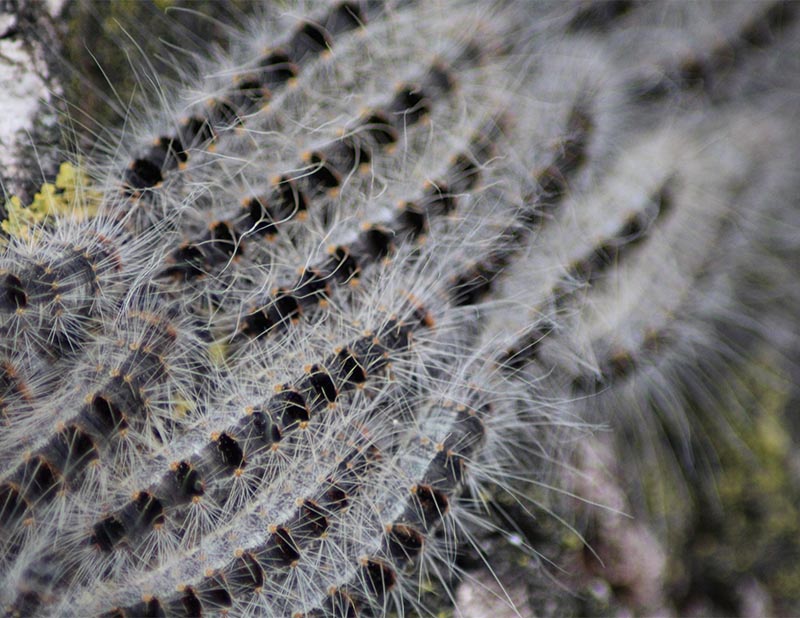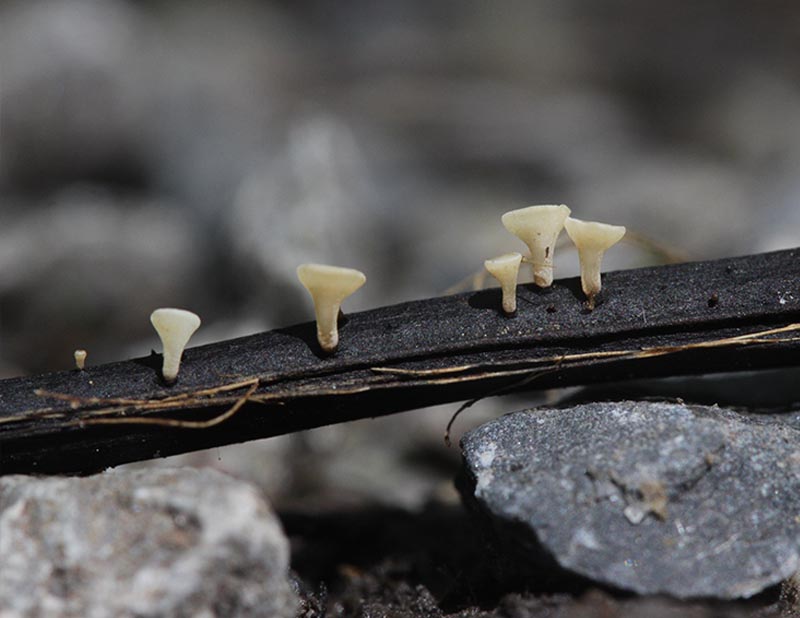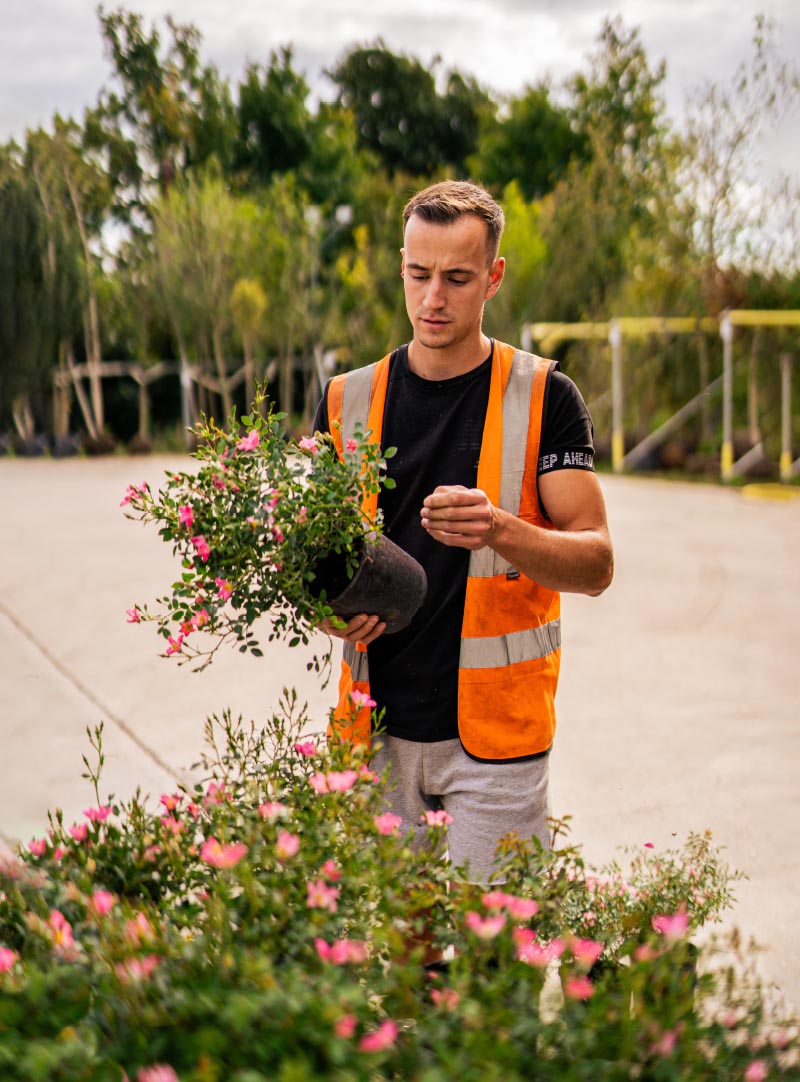Biosecurity Benefits for UK Grown Plants
Protecting our native plants and environment
Throughout recent years, The UK has faced many devastating effects from a number of harmful organisms, which have emerged from overseas. Although some plant pests and diseases can naturally blow into the south of England, the movement of plants, wood and timber is the primary way for them to be introduced to new areas, and the increased globalisation of trade, as well as environmental change, have increased this risk.
Biosecurity involves taking precautions to prevent harmful organisms from being introduced and allowed to spread. These harmful organisms include non-native pests, such as insects; and pathogens, such as bacteria, viruses and fungi. Examples include Thaumetopoea processionea (oak processionary moth), Thaumetopoea pityocampa (pine processionary moth) and Hymenoscyphus fraxienus—the fungus that causes ash dieback. Ash dieback is a serious disease that affects our native ash tree and triggered major public awareness—encouraging change to the UK’s approach to plant biosecurity.
How does biosecurity help to protect our native plants?
Plants are vitally important and play a key role in ecosystems, the economy, mitigating the effects of climate change, and our wellbeing. Unfortunately, pests and diseases can have a devastating impact on plants. In 2019, the IUCN European Red List of Trees stated that around 42% of Europe’s native trees had a high risk of extinction from the primary threat of invasive species, such as plant pests.
Although pests and diseases can spread naturally, e.g. through wind-blown spores, the globalisation of trade and travel over previous decades has resulted in higher risk. It’s also known that individuals can bring pests and diseases to and from countries when travelling. In the last thirty years, most UK species of native trees have been affected by an introduced pest or disease. There are now a further 127 high risk pests and diseases on the UK Plant Health Risk Register, which could significantly impact our native plants if they reached the UK. Therefore, it’s important to minimise the risk of this happening. Once a new pest or disease establishes itself in a new place, it’s almost impossible to eradicate it.


Thaumetopoea processionea in procession around an oak tree.

Ash Dieback – Hymenoscyphus fraxineus
Which pests and diseases are currently threatening our native plants?
A current threat for the UK is the bacterium Xylella fastidiosa, which causes disease in many plants. Destroying olive groves in Puglia, Italy, it has had a devastating effect on plants, but it hasn’t been detected in the UK. Xylella can infect over 650 species of plants—such as rosemary, bay, lavender and oak. It’s known to be one of the most dangerous plant bacteria worldwide, and there are major outbreaks in southern Spain, Portugal, the Balearic Islands and southern France.
The oak processionary moth is a pest of oak trees. Its caterpillars, or larvae, feed on the foliage of oak trees, which leaves them vulnerable to other pests and diseases. Oak processionary moth spread to England in 2005, and is currently established across parts of London and surrounding areas. Whilst it’s not possible to eradicate oak processionary moth, a government programme was introduced in 2012 to ensure their spread and impact on oak trees was minimal.
Native to North Africa, southern Europe and the Middle East, the pine processionary moth is a further pest that’s threatening our native trees. The pine processionary moth caterpillars feed on pine tree needles and various conifers, leaving our trees in a vulnerable state. Although no established populations have been discovered in the UK, the occasional pine processionary moth and one transient population have been spotted in the South of England. The risk has increased in recent years as the pine processionary moth appears to be widespread across Europe and is gradually heading North.
Ash dieback (Hymenoscyphus fraxienus) was first detected in the UK in 2012, and this fungal disease has been fatal to our native ash trees. It arrived in the UK through ash tree imports which were unfortunately already infected with the disease. Ash trees are extremely valuable for us, as they are a versatile and useful native species which provide timber, as well as valuable habitats for a number of insects and invertebrates.
What effect has ash dieback had on our native trees?
The decline in ash trees could lead to implications for both biodiversity and the hardwood industries, as well as the effect it has on climate change. The Government’s targets to achieve net zero by 2050, requires a minimum of 1.5 million hectares of additional woodland, with an aim to increase England’s tree cover to 12%; this is part of the England Trees Action Plan, and the funding increase in this area will mean a rise in demand for biosecure trees from UK growers.
With the number of trees we are losing to ash dieback, this aim will be incredibly difficult. It has been predicted that 150 million mature trees and two billion saplings will die from this disease, with a cost of around £15 billion over the coming decades. In terms of biodiversity, losing our native ash trees will mean a decline in species which rely on them—a big impact on wildlife.
Which biosecurity methods does the UK have in place?
A total ban on imports wouldn’t be feasible, due to the need for both consumer choice and food security; it’s vital that we find a balance.
The UK has biosecurity methods in place to minimise the spread of fatal pests and diseases. To be most effective, these biosecurity methods should be consistently practiced—not simply during an outbreak. If an outbreak is in its early stages, biosecurity practices can reduce or prevent the spread.
The current threat of Xylella has resulted in the UK horticulture and forestry sectors introducing the Plant Health Management Standard. The Plant Health Management Standard involves practical requirements which businesses and organisations—such as commercial nurseries, plant retailers and public gardens—follow to help protect the plant supply chain. Plant passports and phytosanitary certificates form part of the standard for most plants to enter or leave the UK and demonstrate that the material has met the legal requirements, been officially inspected and is free from plant pests and diseases.
In addition to the Plant Health Management Standard, is a voluntary scheme named Plant Healthy, that promotes plant health and biosecurity standards across growers, landscapers, garden retailers and arborists. As part of Plant Healthy, businesses and organisations are audited and formally demonstrate their compliance with the Plant Health Management Standard. The aim is to minimise risk of introducing and spreading pests and diseases, and help professionals to grow and supply healthy plants.

Here at Greenwood, we have extensive measures in place to minimise any threats. We have multiple sites across the UK; this gives us more control over the introduction and spread of any pests and diseases which could threaten the health of our plants, and allows us to quarantine, if required. In addition, at Greenwood Holland, the trees that we import undergo extensive checks at our own quality control check point in the Netherlands.
In terms of our regular routine across the nurseries, the G Team adhere to plant hygiene and housekeeping best practices as part of our Every Plant Matters approach. This means assessing the risk of harbouring and transmitting plant pests via our growing media, weed management, water usage and waste disposal. Cleaning and sterilisation processes are vital to minimise risk of an infestation.
With both ash dieback and Xylella, as well as many other pests and diseases wreaking havoc amongst our native plants, it’s clear to see why biosecurity is so important for our population, woodlands, and planet.
If you’d like to find out more about our UK grown plants, contact us today.

